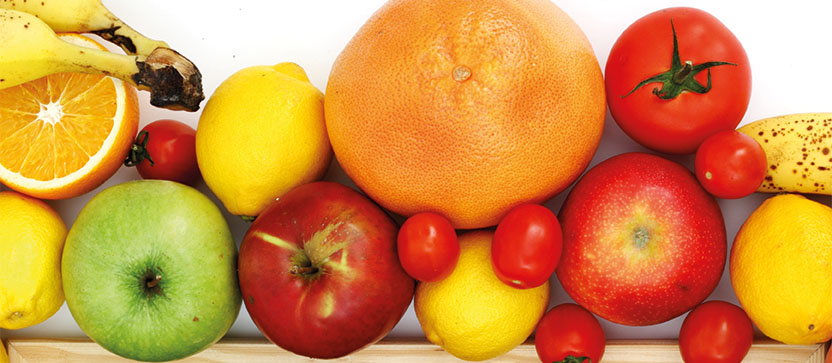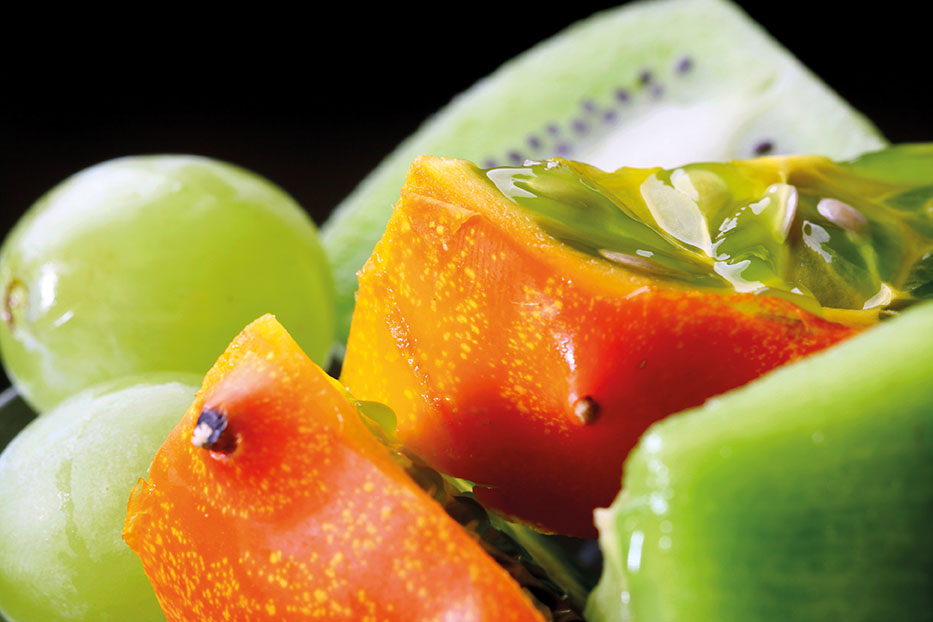What a difference a diet made for this guest contributor

Anna Elizabeth suffers extreme menopausal symptoms and HRT is not an option for her. Desperate to find a natural way of improving things she began to monitor her diet. She’s been conducting her research for the last 20 months and found that eating a diet low in Omega-6 fatty acids helped reduce her menopausal symptoms.
You can read about her investigations in the Spring 2017 Issue of Menopause Matters Magazine
The specific foods that did, or did not work, for Anna are listed in the Tables below. They are aimed at those who, like her, suffer severe and debilitating menopausal flushing symptoms.
Table 1. Foods Anna avoids
Foods to avoid |
Foods to avoid include: |
Exceptions to the rule |
| Oils of any description | Any plant-derived oils, e.g. olive, sunflower, avocado. Oil-based sauces such as tartare sauce and mayonnaise. | None. |
| Fats | Margarine, biscuits, pastries and cakes | Trans-fats (e.g. in sorbets), but take sparingly for other health reasons; 0% fat cake (with sparing egg yolk or an omega-3 rich egg) e.g. tea loaf, Swiss roll, fat-free Victoria sponge. |
| Dairy products | Milk, butter, cheese, cream, ice-cream, yoghurt | 0% fat yoghurt (note that this is “0% fat”, not ‘low fat’), 0% fat fromage frais. |
| Nuts, seeds and spices | Almonds and marzipan, including spices such as chilli, paprika, cumin, coriander seed; hot chilli peppers. Coffee beans (e.g. ground coffee), unless very well filtered. Coconut milk. |
Linseeds (flaxseeds) taken sparingly. Cinnamon, nutmeg, ginger. Cardamom pods and juniper berries to be used whole during cooking, and retrieved. Black peppercorn to be used sparingly. Instant coffee. Coconut water. |
| Wholegrain cereals and rice, and derivatives | Wheat, oats, wholegrain couscous, barley, quinoa, pasta, brown or red rice (including brown rice miso), bread. | Low fat white rice (Total fats, minus Saturates = less than 0.3 g per 100 g as cooked). Pearl barley taken sparingly. |
| Egg yolk | A small proportion of one egg yolk may be fine, e.g. in cake. ‘Intelligent Eating omega-3 rich’ egg: max one half of a yolk may be eaten at any given meal. |
|
| Most meats | Beef, lamb, pork, chicken and, February-September, hare. | Natural grass-fed meats, e.g. venison, water buffalo. Free-range and organic (no skin) turkey. Free-range breast meat (no skin) of chicken, duck and pheasant. Hare can be eaten mid-winter when it does not feed on grains. |
| Chocolate | Cocoa, chocolate flavouring. | None (sorry girls). |
Table 2. Foods Anna finds are safe, assuming sensible portion sizes
| Foods that are safe | Foods that are safe include: |
Exceptions to the rule |
| All fruit | Fresh, tinned and dried fruit; tomatoes and passatta; coulis/fruit sauces. Dried grape fruits (i.e. raisins, sultanas, currants) without oil must be obtained from a health shop. |
Dried figs, avocado pear, olives, kiwifruit. Dried grapes fruits bought in the supermarket have been preserved in oil. |
| Vegetables - root, stem and leaves are generally safe | Potatoes, carrots, parsnips, broccoli, courgettes, runner beans, peppers (but not the seeds), gherkins, mushrooms, beetroot, butternut squash, onions, parsley, mint, chives, dill, fresh Brussel sprouts (preferably not from a supermarket), root ginger, coriander leaves. | Seed parts of the plant, e.g. peas, beans (except runner beans), sweetcorn and lentils - to be taken sparingly. Cauliflower, dried herbs; frozen and supermarket Brussel sprouts. Lettuce (except Dolce verde) and spinach (especially cooked spinach) to be taken sparingly. |
| Fish | All types of fish, although be careful with farmed fish (including smoked salmon) which have raised levels of the wrong type of polyunsaturated fats, so have small portions of farmed fish or smoked salmon. | Fish preserved in or prepared with oil (and this includes sardines in tomato sauce where oil has been added). Be careful with smoked fish where yellow colouring has been added. |
| Free-range lean meats | Venison, water buffalo, free-range organic turkey, and (be careful with these): free-range breast meat (no skin) of chicken, duck and pheasant. | Venison mince. |
| White rice, noodles and non-wholegrain couscous | Boiled white rice, noodles (rice or some types of low-fat egg); check the nutrition information table to ensure that “Total Fats minus Saturates” = less than 0.3 g/100 g as cooked. White couscous. |
White rice with ‘Total Fats = over 0.5g’ (such as some basmati and, generally all, frozen rice). |
| Vinegar-based sauces | Balsamic vinegar, HP sauce, tomato ketchup, cider/wine vinegars, soy sauce, mint sauce, cranberry sauce. | |
| Egg white | Meringue, mousse. | Mousse with cream and/or egg yolk. |
| Chutneys, jams, pickles | With oil or spices such as chilli, paprika, cumin and coriander seed (i.e. that are derived from seeds). | |
| Sorbets, jellies | Redcurrant jelly, mint jelly. |
A Balancing Act between the Omega-6s and the Omega-3s
I have not eliminated omega-6s from my diet, but I have reduced their intake from the current Western dietary level to a level that I can cope with, and find that it is at a level possibly comparable to our ancestors.
There are two essential fatty acids that require to be ingested through the diet because the human body cannot produce them. One occurs in the omega-6 family and one occurs in the omega-3 family. These are linoleic acid and alpha-linolenic acid, respectively. However, it is difficult to avoid eating linoleic acid given its near-ubiquity in foods, and there is no recommended lower limit for an adequate daily intake.
Research has shown that the omega-6 and omega-3 families vie for the same enzymes to produce both energy and chemicals that act as ‘local hormones’; it might considered a fatty acid feud in the body. These local hormones regulate many functions for normal growth and development, and they can either be influenced by the omega-6 family or the omega-3 family. For those who want to read more on this, see Susan Allport’s (2006) book, “The Queen of Fats: Why Omega-3s Were Removed from the Western Diet and What We Can Do to Replace Them”.
The most important message for us in the Western world is:
the intake of omega-6 fatty acids must be reduced before there can be benefits from increasing the omega-3 fatty acids.
I found that reducing omega-6 fatty acids reduced my menopausal heat ‘overnight’, although symptoms continued to ricochet, at a lower level, over a 36-48 period. However, the benefits of increasing the omega-3 fatty acid ALA (the only fatty acid in the omega-3 family that cannot be made in the body) may take about 2-3 months to become obvious.
Dr Artemis Simopoulos is a Greek-born American doctor who raised the importance of omega-3 fatty acids over omega-6s in our diet in the late 20th Century. In 1999, Dr Simopoulos published a book with Jo Robinson, entitled: The Omega Diet: the Life-Saving Nutritional Program Based on the Diet of the Island of Crete. It describes how to balance omega-3 and omega-6 fatty acids, and lists the diseases associated with a diet high in omega-6s. For various reasons, the level of omega-6 fatty acids in the Omega Diet are too high for my menopausal body, but it is possible that sufferers with less severe symptoms may find this diet helpful.
Caveats with balancing the fatty acid families
Should you care to try this diet, I urge you to also consider balancing the whole of the diet, and not just balancing the fatty acids. Please take specialist advice, especially if you have any medical issues.
How not to turn into skin and bones
Fats are composed of fatty acids, and there are usually a mixture of fatty acids - saturated, monounsaturated and polyunsaturated in each fat.
It is difficult to simply have one food that excludes one family of fatty acids without excluding the rest. Yet fats are rich in energy, although we need them for many more reasons than just energy.
In 2010, the European Food Safety Authority therefore proposed that an adult’s intake of fats should provide no less than 20% of daily energy requirements. This means that a woman in her 50s should eat 255-500 kcal from fats (any type) each day (i.e. 28-56 g), depending on the level of physical activity.
To maintain flushing and sweating at low enough levels to not cause discomfort, my meals contain no more than 1-1.5 g of omega-6s, with about 3 snacks containing no more than about 0.3 g each. This is helped by a daily inclusion of:
- 10-15 g of omega-3 fatty acid ALA-rich ground linseeds (linseeds being the exception to the rule, ‘Don’t eat seeds’, because these are the only seeds where the omega-3 family outweighs the omega-6 content, and they do this by a whopping 4:1 ratio),
- a portion of oily fish, and
- taking supplements, such as starflower oil, seabuckthorn oil and fish oils (the latter on days where I do not have oily fish), which combined may have almost 1g of omega-6s.
My daily intake of omega-6 fatty acids is therefore about 5-6g. Remembering that I am very small-framed, this compares to the 7g that the average American (UK data unknown) would have had at the beginning of the 1900s.
Calcium for bones
The reference intake for an adult is 700mg of calcium a day.
Calcium foods that are low in polyunsaturated fats include: 0% fat yoghurt, greens (such as broccoli), turnips, white beans, fresh figs, oranges, and fish, especially whitebait, and sardines and pilchards because of the small bones, but salmon and tuna also contain calcium.
Low-fat breakfast cereals fortified with calcium may be eaten in small amounts. During this research period, I have taken calcium supplements.
Also consider vitamin D (present in oily fish) and physical exercise.
Finding foods that are not artificially high in omega-6 fatty acids
I have to warn readers that this is not an easy diet for the severest sufferer.
This is a result of an increased level of omega-6 fatty acids in the foods we produce by:
- using genetic selection to produce greens that take longer to spoil on the supermarket shelf,
- feeding our livestock grain, which increases the omega-6s in the meat and products such as milk and eggs, and
- adding vegetable oils to foods to prolong shelf-life.
Tips to find foods that are not so high in omega-6 fatty acids include:
- obtaining fruit and vegetables that are as fresh as possible and, preferably, from older varieties, so find a local farmers market;
- free-range organic meat, particularly lean meats such as turkey and venison (most grass fed meats should be fine, but best taken from an organic farm) - check with your local butcher and/or local farmers market;
- obtaining dried fruits from a health food shop - these should be clearly labelled to indicate that no oil has been added;
- read the ingredients and Nutritional Information Tables on the side of food packaging, and avoid anything with vegetable oil, and for fruit and vegetables, look for foods that contain less than 0.5 g of fats per 100g.
More details of a planned trial can be found in the Spring issue of Menopause Matters magazine


